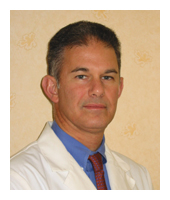
I know how confusing it can be to select a good sunscreen. That's why I'm thrilled to be posting this advice from Dr. David Bank, the author of Beautiful Skin — Every Woman's Guide to Looking Her Best at Any Age.
UNDERSTANDING YOUR SUNSCREEN:
DR. DAVID BANK HELPS YOU READ BETWEEN THE TANNING LINES
Sunscreen labels can be overwhelming between the letters on the packaging (UVA and UVB), the various SPF numbers, and labels touting “long lasting,” “water resistant” and “waterproof.” Fortunately Dr. David E. Bank, founder and director of the Center for Dermatology, Cosmetic and Laser Surgery and author of Beautiful Skin – Every Woman’s Guide to Looking Her Best at Any Age, breaks down the confusing terms to help you read between the lines and find the most protective product that’s right for your skin.
WATCH YOUR RAYS
UVA RAYS (Ultraviolet- A): UVA are long and highly penetrable rays that can damage your skin even through glass windows.
UVB RAYS (Ultraviolet B): These short solar waves are hotter and stronger than UVA. Since UVB rays are more intense they are the main culprit behind sunburn and surface skin cancer.
BOTTOM LINE: “It is imperative that you protect your skin from both UVA and UVB rays,” explains Dr. Bank. Look for products labeled “broad spectrum” which indicates it shields against both. Look for following ingredients: Avobenzone, Helioplex, Mexoryl, zinc oxide, or titanium dioxide.
PICKING A SPF
SPF (Sun Protection Factor): SPF measures the length of time a product protects against skin reddening compared to how long the skin takes to redden without protection. For example, someone who would burn after 5 minutes in the sun would expect to burn after 50 minutes if protected by a sunscreen with SPF 10.
SPF 15: The Skin Cancer Foundation recommends at least SPF15, which blocks 93% of UVB.
SPF 30 and Higher: SPFs higher than 30 block 97% and are advisable for sun-sensitive individuals, skin cancer patients, and people at high risk of developing skin cancer.
BOTTOM LINE: Dr. Bank suggests using at least an SPF 15 even if you have a darker complexion. Since it take 30 minutes for sunscreen to absorb into the skin, remember to apply your sunscreen at least a half hour before being exposed to the sun.
OIL INTAKE
OIL-FREE: Oil-free sunscreen is non-comedegenic so it doesn’t block pores. Dr. Bank suggests using it on your face or other acne prone areas such as your chest or back.
BOTTOM LINE: Whether you use an oil-based or oil-free sunscreen you will still get the same protection. Your own personal preference for consistency should be the deciding factor.
WATER PROOF
WATER PROOF: For a product to be waterproof according to the FDA’s definition, it must maintain its SPF level for 80 minutes after water exposure.
WATER RESISTANT: A water resistant product maintains its SPF level for 40 minutes after water exposure.
BOTTOM LINE: By definition both products will give you protection in the water but Dr. Bank states that it never hurts to reapply sunscreen every 1-2 hours if you’re out in the sun sweating or in and out water.
For more information, check out Dr. Bank's website at www.thecenterforderm.com.
